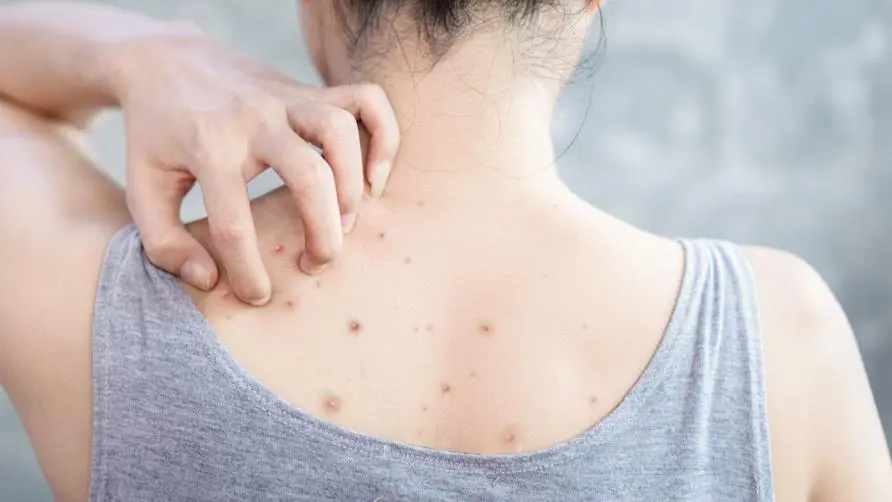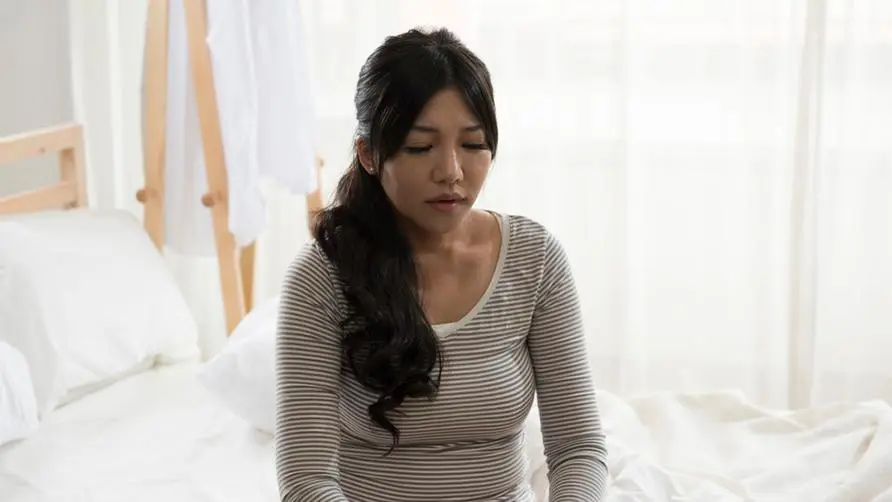Are you past puberty but have acne all over your body? Medical warning: Repeated acne in "1 private part" may be hidradenitis suppurativa

Mr. Weng, who is about 50 years old, started getting acne in his groin and groin area 7-8 years ago. It would happen every few months. At first, he could control it by taking medicine, but later the acne grew uncontrollably into a large area. , and even gradually become swollen, painful and secreted, which greatly affects the quality of life and physical and mental health. However, Mr. Weng sought medical treatment many times but saw no improvement. It was not until he collected information online to learn about his condition and went to relevant institutions to verify the doctor’s diagnosis that he was finally diagnosed with “Hidradenitis Suppurativa.”
It takes 7.2 years to diagnose hidradenitis suppurativa? Doctor: Low disease awareness may lead to misdiagnosis crisis!
In teenagers, due to the influence of hormonal instability, acne is prone to appear on the face. Many people’s acne does not appear on the face, but on the back or other parts of the body. Since most acne will slowly subside over time, even though its location is relatively uncommon or its frequency is high, few people will pay special attention to it or even seek medical treatment as long as it has not affected their quality of life.
Hidradenitis Suppurativa (HS) initially appears like ordinary acne, and is more likely to occur in specific areas such as the armpits, scalp, buttocks, groin, around the anus, genital perineum, and between and under the breasts of women, National Taiwan University Dr. Cai Chengfang from the Dermatology Department of the Hospital Affiliated to the Medical College said that because the location of acne is relatively private and may even contain pus and odor, patients are often embarrassed to seek medical treatment for fear of being labeled as unhygienic. In addition, the public is not aware of purulent acne. Comprehensive factors such as the lack of understanding of hidradenitis and the lack of disease information delay the average time from onset to diagnosis for patients with hidradenitis suppurativa by about 7.2 years.
What are the evaluation indicators for hidradenitis suppurativa? Be wary of acne scars in “non-adolescents”!
The difference between hidradenitis suppurativa and acne is that hidradenitis suppurativa occurs in the hair follicles where apocrine glands are distributed, while acne occurs in sebaceous gland hair follicles. Hidradenitis suppurativa does not have atretic acne. Phenomenon, but the nodules in the acne area may cause the formation of skin fistulas and scars. Dr. Cai Chengfang said that although the onset of the disease also has similar acne lesions, if the above-mentioned common diseased areas have recurring nodular pain or inflammation, redness, swelling, or abscess leakage more than 2 times within 6 months, you need to seek medical treatment as soon as possible. .
In more severe cases, multiple skin fistulas are connected to each other, causing large-scale abscesses and inflammation. The lymphatic vessels are blocked and edematous, leading to itching and odor. Dr. Cai Chengfang said that at this stage, not only is it difficult to rely on drugs to relieve the disease, but it will also be long-term. Inflammation can also easily induce other comorbidities, such as cardiovascular disease, thyroid disease, mental illness, metabolic disease, and other inflammatory diseases. It will have a huge negative impact on the patient’s physical and mental health and quality of life.
Are acne-prone faces and obese people at higher risk of suffering from hidradenitis suppurativa?
According to research on patients with hidradenitis suppurativa in Taiwan from 2000 to 2013, most cases occur between the ages of 15 and 24. The incidence rate is three times higher in women than in men, and a small number of cases will occur in middle-aged adults. . The cause of the disease is not directly related to the quality of the skin itself. Dr. Cai Chengfang said that since hidradenitis suppurativa is an autoimmune disease, the cause is still unclear.
However, the risk factors that can be summarized as affecting the occurrence of the disease are: uncontrollable genetic inheritance and obesity-related hormone secretion, which can easily make the patient’s disease severity higher after diagnosis. Excessive body fat also provides an opportunity for bacterial growth. Conditions. In addition, bad living habits, such as smoking, which causes inflammation in the body, and a diet high in sugar and milk, can easily increase the sensitivity of androgen-related receptors in the body, leading to the possibility and severity of the disease. Spend.
The combination of drug treatment and daily care is expected to improve the quality of life of patients with hidradenitis suppurativa.
Professor Liao Yihua said that hidradenitis suppurativa cannot be cured, but providing general care, local treatment, systemic treatment and surgical treatment according to the severity of the disease can help achieve treatment goals, reduce the pain of the lesions, avoid the worsening, recurrence and progression of the disease, and thus Improve quality of life. “General care” includes wound care, pain management, referral to other specialties based on co-morbid needs, as well as weight management and dietary modification. “Topical treatment” mainly uses antibiotic ointments and antibacterial lotions. “Systemic treatment” includes antibiotics, acid A, hormonal treatment drugs, immunosuppressants or immunomodulators, biological agents, small molecule inhibitors and other drug options.
Dr. Cai Chengfang said that mild to moderate hidradenitis suppurativa is usually an abscess state, or a fistula is formed but the area is relatively local. Most treatments include taking antibiotics, acid A or steroids to relieve pain, blocked hair follicles and wounds. Infection, however, if extensive fistula communication and persistent abscess have occurred, and the expected improvement has not been achieved after 12 weeks of antibiotic treatment, the use of biological agents or surgery to drain the pus and remove the infected tissue needs to be considered .
In addition, daily care is also very important for disease relief. For example, after obese patients lose weight, the related hormones that promote inflammation in the body can be reduced, and the reduction of skin folds caused by obesity can also prevent the breeding of bacteria in prone areas; the living environment should be kept as dry and stable as possible; and clothing On the other hand, try to avoid tight clothing that will put pressure or friction on the affected area, and wear loose clothing. In your daily diet, you need to reduce the intake of dairy products and carbohydrates, and maintain a balanced and low-processed diet to maintain immunity. In addition, through lifestyle adjustments and drug intervention, there is a chance to alleviate uncomfortable symptoms, but the most important thing is to pay more attention and seek medical treatment as soon as possible when lesions appear, so that you can get good treatment as early as possible and prevent the occurrence of new lesions.
Extended reading: Tried all the bottles! Why can’t my acne go away? Nutritionist reveals the “5 must-eat foods” to treat stubborn acne





